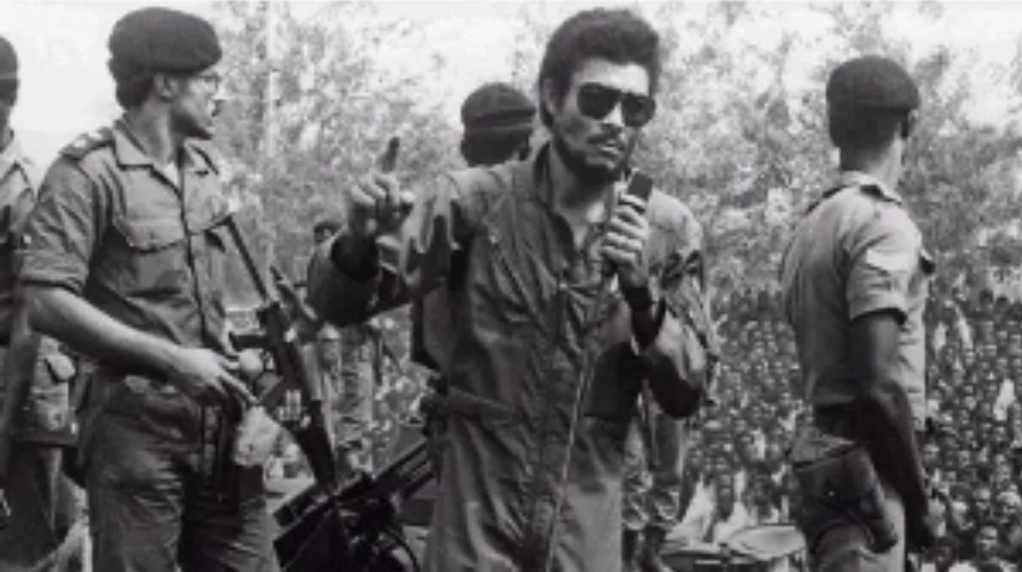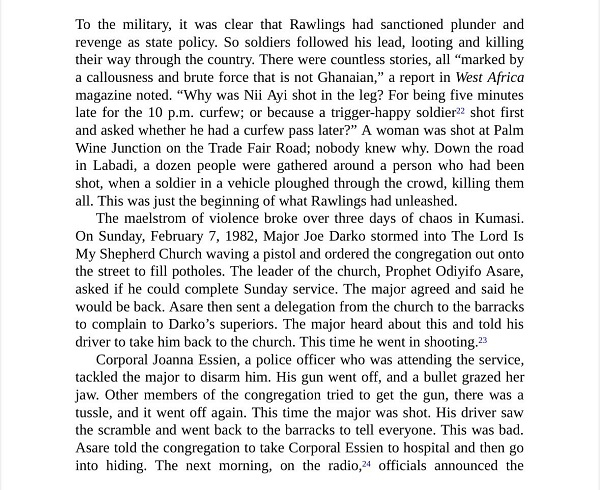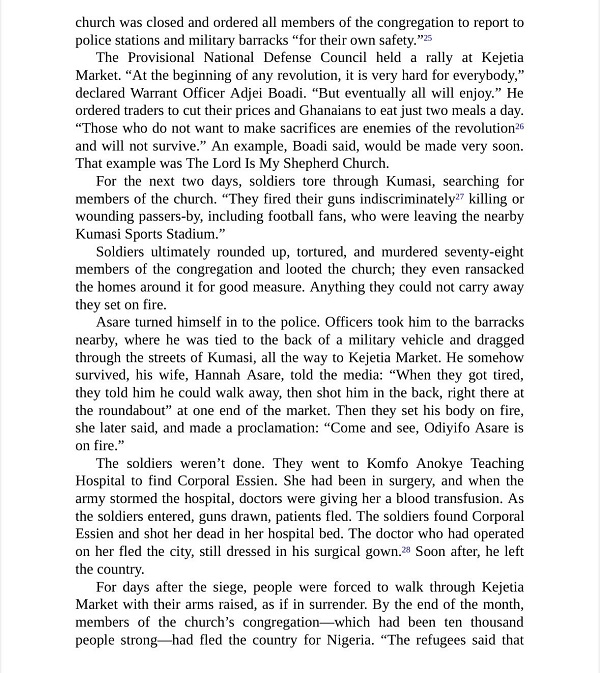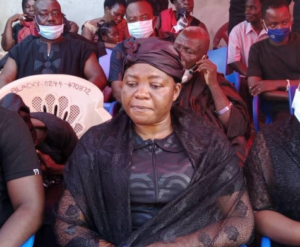The heart-wrenching story of how rampaging PNDC soldiers killed over 78 Kumasi residents in two days

The country has long upheld diverse religious practices, where Christians, Muslims, and practitioners of traditional African religions coexist peacefully.
This peaceful coexistence has been nurtured by mutual respect from successive governments, individuals, and communities.
However, in February 1982, Kumasi, in the Ashanti Region, was rocked by violence and retribution as military forces launched an intense crackdown on a local church congregation, resulting in the deaths of approximately 78 individuals.
This brutal action, ordered by the ruling Provisional National Defence Council (PNDC) and overseen by the late former president Jerry John Rawlings, was widely condemned as a gross abuse of power.
The incident began on February 7, 1982, when Major Joe Darko stormed into ‘The Lord Is My Shepherd Church’ during a Sunday service.
Wielding a pistol, Darko demanded that the congregation leave the church and fill potholes on the street outside.
According to the book Anansi’s Gold by Yepoka Yeebo, Prophet Odiyifo Asare, the church leader, requested permission to finish the service first.
Although Major Darko initially agreed, Asare later expressed dissatisfaction with Darko’s behaviour to military authorities, prompting the major to return to the church with deadly force.
Upon his return, a scuffle broke out when Corporal Joanna Essien, a police officer attending the service, attempted to disarm Major Darko. During the struggle, Darko was shot. His driver, meanwhile, rushed back to the military barracks to report the incident, sparking a chain of violent events.
The next day, military officials announced the closure of the church and ordered its members to report to police stations and barracks “for their safety.”
Warrant Officer Adjei Boadi, speaking at a PNDC rally at Kejetia Market, warned of the revolution’s demands, declaring, “Those who do not want to make sacrifices are enemies of the revolution and will not survive.”
Fearful for their lives, some church members fled to other parts of town, leading soldiers to scour Kumasi’s streets, indiscriminately opening fire on passersby, including football fans leaving Kumasi Sports Stadium.
Soldiers also looted the church and nearby homes, setting fire to anything they could not carry. Within two days, 78 congregation members were reported to have been tortured and killed.
Prophet Asare eventually surrendered to the military, only to face a brutal death.
His wife, Hannah Asare, recounted how soldiers tied him [Prophet Asare] to a vehicle and dragged him through the streets to Kejetia Market.
She told the media that when the soldiers grew tired, they shot her husband in the back and set his body ablaze.
The violence continued as soldiers hunted Corporal Joanna Essien, who was in surgery at the Komfo Anokye Teaching Hospital for injuries sustained during the initial church incident.
When soldiers stormed the hospital, doctors were administering a blood transfusion to the wounded officer.
In the ensuing chaos, Corporal Essien was found and shot dead in her hospital bed, and the attending doctor reportedly fled the city in his surgical gown.
As the soldiers enforced curfews and suppressed dissent, residents were forced to walk through Kejetia Market with their arms raised in surrender.
By the end of February 1982, the ten thousand-strong congregation of ‘The Lord Is My Shepherd Church’ had fled Kumasi, with many seeking refuge in neighbouring Nigeria.
For many, this incident stands as a chilling reminder of the military brutality during the early days of the Rawlings’ regime.
See accounts of the incident as detailed in Yepoka Yeebo’s book below:









